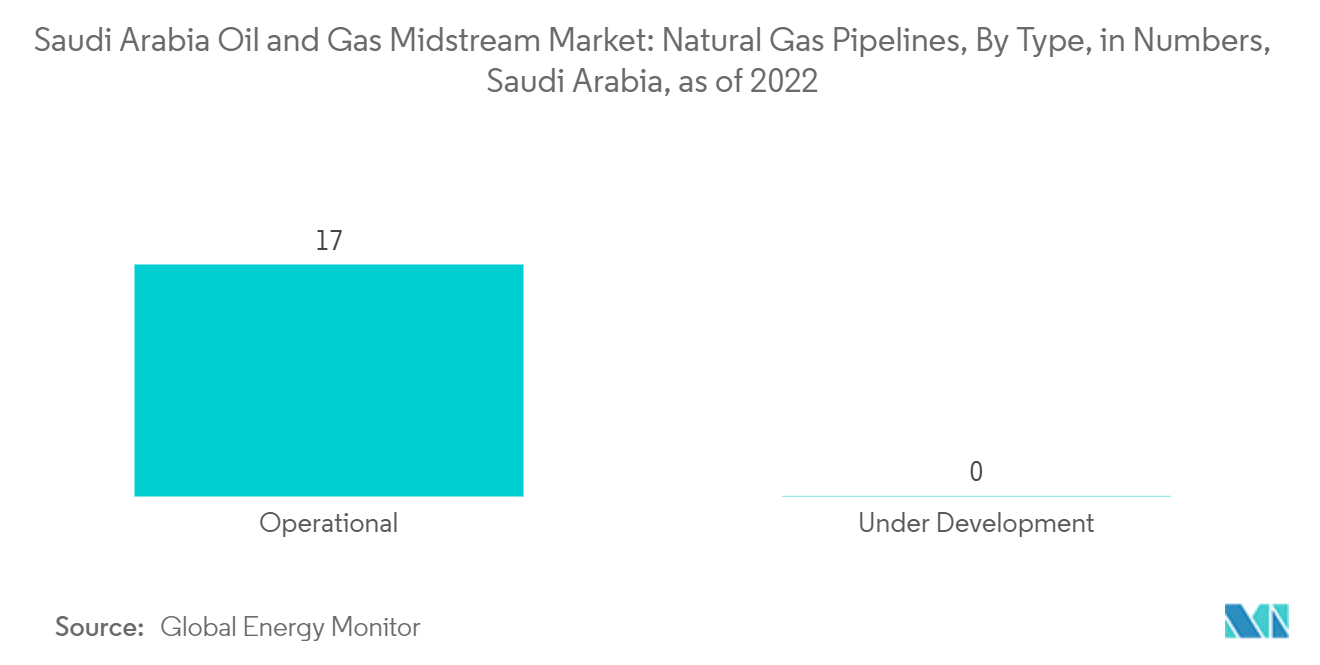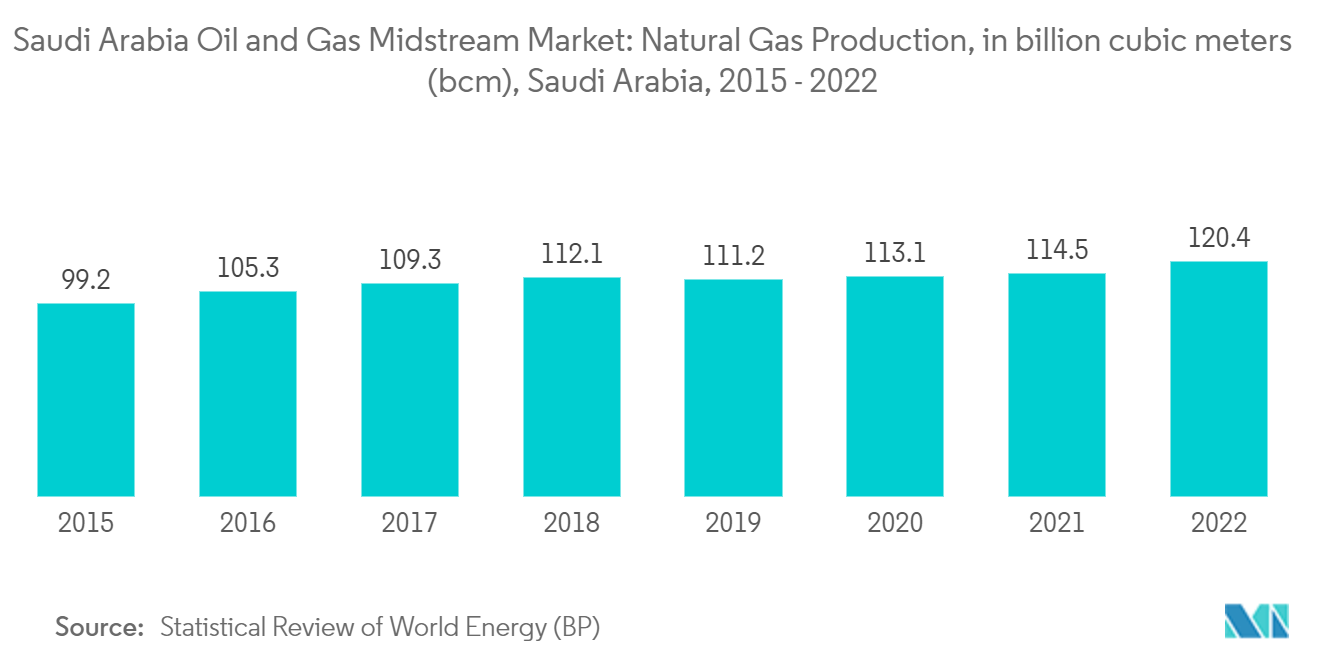Market Trends of Saudi Arabia Oil And Gas Midstream Industry
Pipeline Sector to Witness Growth
- Pipelines provide a convenient and economical mode of transportation for oil and natural gas from upstream production to downstream refineries, power stations, industries, and domestic consumers in Saudi Arabia. As of 2022, Saudi Arabia had 17 natural gas pipelines supplying natural gas across the country.
- Saudi Aramco's Master Gas System, a network of pipelines that connects its key gas production and processing sites throughout the kingdom, is currently undergoing an expansion. As of 2022, the system's current capacity was around 9.6 billion standard cubic feet per day of natural gas supplying Eastern, Central, and Western industrial complexes.
- However, Saudi Aramco owned and operated around 90 crude oil and petroleum products pipelines, totaling 12,000 miles as of 2022, which link producing fields to processing plants and export terminals. The major operational pipelines are the East-West crude and the Abqaiq-Yanbu, which carry liquid natural gas products.
- Moreover, in November 2022, Saudi Aramco announced that it was releasing a tender for 1.6M metric tonnes of 56-inch non-sour surface pipelines needed for the Master Gas III project in Saudi Arabia. The new pipelines will help Aramco to supply natural gas from East to West Saudi Arabia. Also, Aramco will require more pipelines for the carbon capture and storage system that will supply all the carbon emissions captured through around 400 to 500 thousand metric tonnes (MT) pipelines.
- Hence, the pipeline sector is expected to witness significant growth in Saudi Arabia's oil and gas midstream market during the near future.

Increasing Gas Production to Drive the Market
- Saudi Arabia has made a significant stride in energy resources by discovering new natural gas fields in the southern Empty Quarter region. Production of natural gas in Saudi Arabia also increased significantly from 99.2 billion cubic meters in 2015 to 120.4 billion cubic meters in 2022. A further increase in production is expected to boost the sector's growth.
- Also, abundant and cheap natural gas has become a crucial contributor to long-term energy security as well as economic development and diversification of Saudi Arabia. In Saudi, the government has placed gas at the center of its clean energy transition strategy as it aims to reduce its carbon footprint meaningfully by 2030 and reach net zero by 2060. Saudi has plans to raise its gas production by over 50% to c.15bsfd by 2030, with incremental volumes expected from natural gas and ethane.
- In November 2023, the Saudi Arabian Oil Company (Saudi Aramco) identified two major fields, namely Al-Hiran and Al-Mahakik, in this expansive desert area in the southern Arabian Peninsula. This discovery marks a significant advancement for Saudi Arabia in diversifying its energy resources. The nation, predominantly known for its vast oil reserves, is now expanding into natural gas.
- With regard to expansionary projects, Jafurah’s unconventional field development stands out as one of the largest in terms of incremental capacity addition and investment size (expected to require over USD 68 billion in capex over the first ten years of development, as per Aramco). Jafurah is forecasted to add 200 million standard cubic feet per day (MSFD) by 2025, scaling up to a sustainable 2.0 billion standard cubic feet per day (BSFD) by 2030 and 2.2 bsfd by 2036, in addition to 420 msfd of ethane and 630 kbpd of NGLs and condensate. Besides Jafurah, Aramco expects to add 2.5 bsfd of incremental gas production capacity by 2025 from the Marjan field. Such developments are anticipated to offer significant opportunities for the Saudi Arabia oil and gas midstream market during the forecast period.
- Owing to the above points, increasing natural gas production is expected to drive the growth of the country's oil and gas midstream market.


